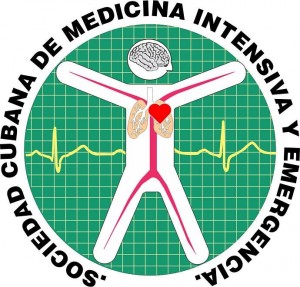Efectividad de la nutrición enteral precoz en la pancreatitis aguda según las escalas de Ranson, Apache II, y Balthazar Hill. Effectiveness of the precocious enteral nutrition in the acute pancreatitis according to scales of Ranson, Apache II, and Balthaz
Palabras clave:
nutrición enteral precoz, Apache, litiasis, fístulas, ascitis / precocious enteral nutrition, lithiasis, fistulas, ascitesResumen
Introducción: Desde hace más de una década existen artículos publicados de nutrición enteral y parenteral en el curso de la pancreatitis aguda. Estudios recientes indican que la nutrición enteral puede mejorar la evolución de la enfermedad grave, reducir las complicaciones y favorecer una recuperación más rápida de la enfermedad.
Objetivo: Demostrar la efectividad de la nutrición enteral precoz con un régimen del suplemento nutricional antes de las primeras 72 horas de ingreso apoyados con la aplicación de tres scores de evolución y pronóstico: Ranson, Apache II, Balthazar Hill.
Método: Investigación clínica cualitativa y descriptiva, empleando algunas variables de tipo cuantitativas y cualitativas. Se excluyeron en el estudio los enfermos que presentaron al ingreso trastornos respiratorios, hemodinámicos y fallo renal agudo. La muestra estuvo conformada por 44 casos.
Resultados: Se observa predominio de la enfermedad en el sexo femenino entre 25 a 45 años de edad. En esos grupos el principal factor causal fue la litiasis de vías biliares, seguido de la instrumentación posterior a realización de colangiopancreatografía endoscópica retrógrada (CPRE). Al aplicarse los scores Ranson y Apache II, al ingreso y a los 7 días, la mayoría de los evaluados se encontraban con una puntuación entre 3-5 puntos. Ninguno de los enfermos presentaron fístulas, ni ascitis y sí presentaron pseudoquistes en 4 casos (9 %).
Conclusiones: La utilización precoz del soporte nutricional enteral es un método efectivo para el tratamiento inicial de la pancreatitis aguda.
Abstract
Introduction: For more than a decade in the course of the acute pancreatitis articles of enteral and parenteral nutrition have been published. Recent studies indicate that the enteral nutrition could improve the evolution of the serious illness, to reduce the complications and to favor a quicker recovery from the illness.
Objective: to demonstrate the effectiveness of the precocious enteral nutrition with a regime of nutritional supplement before the first 72 hours of entrance supported with the application of three evolution and presage scores: Ranson, Apache II, and Balthazar Hill.
Method: Qualitative clinical and descriptive investigation, using some variables of quantitative and qualitative type. The sick persons with breathing and hemodynamic disorders and acute renal failure were excluded of the study. The sample was done by 44 cases.
Results: Prevalence of the illness is observed in the feminine sex between 25 to 45 years of age. In those groups the main causal factor was cholelithiasis followed by the realization of the endoscopic retrograde cholangiopancreatography (ERCP). The scores applied such as Ranson and Apache II in the entrance and at the 7 days, most of the evaluated punctuations were between 3-5 points. None of the sick persons presented fistulas, neither ascites but some of them presented pseudocyst (4 cases, 9%).
Conclusions: The precocious enteral nutritional support is an effective method for the initial treatment of the acute pancreatitis.
Descargas
Citas
1. Banks PA, Freeman ML. Practice Parameters Committee of the American College of Gastroenterology. Practice guidelines in acute pancreatitis. Am J Gastroenterol. 2006;101: 2379-40.
2. Working Party of the British Society of Gastroenterology; Association of Surgeons of Great Britain and Ireland; Pancreatic Society of Great Britain and Ireland; Association of Upper GI Surgeons of Great Britain and Ireland. UK guidelines for the management of acute pancreatitis. Gut. 2005;54(Suppl 3):1-9.
3. Navarro S, Amador J, Argüello L, Ayuso C, Boadas J, de Las Heras G, et al. Club Español Biliopancreático para el Tratamiento de la Pancreatitis Aguda. Recommendations of the Spanish Biliopancreatic Club for the Treatment of Acute Pancreatitis. Consensus development Conference. Gastroenterología y Hepatología. 2008;31: 366-87.
4. American Gastroenterological Association (AGA) Institute on "Management of Acute Pancreatits" Clinical Practice and Economics Committee; AGA Institute Governing Board. AGA Institute medical position statement on acute pancreatitis. Gastroenterology. 2007;132: 2019-21.
5. Takeda K, Takada T, Kawarada Y, Hirata K, Mayumi T, Yoshida M, et al. JPN Guidelines for the management of acute pancreatitis: medical management of acute pancreatitis. J Hepatobiliary Pancreat Surg. 2006;13: 42-7.
6. Meier R, Ockenga J, Pertkiewicz M, Pap A, Milinic N, Macfie J, et al. ESPEN Guidelines on Enteral Nutrition: Pancreas. Clin Nutr. 2006;25: 275-84.
7. García A, García P. Nutrición de los enfermos con pancreatitis aguda. Cuando el pasado es presente. Nutr Hosp. 2008;23(Supl 2):145-52.
8. Martínez Faedo C, Gómez Enterría P, Laborda González L. Nutrición en las enfermedades del páncreas exocrino En: Tratado de Nutrición. Ed. Ángel Gil Hernández. Ed. Acción Médica. España. 2005. p.978-981
9. Ragins H, Levenson SM, Signer R. Intrajejunal administration of an elemental diet at neutral pH avoids pancreatic stimulation. Studies in dog and man. Am J Surg. 1973;126(5):606-14.
10. Mc Clave SA, Snider H, Owens N. Clinical nutrition in pancreatitis. Dig Dis Sci. 1997;42(10):2035-44.
11. Nakad M, Mier R, Ockenga J, Pertkiewicz M. ESPEN Guidelines on enteral nutrition: pancreas. Clin Nutr. 2006;25(2):275-284.
12. Shaw JH, Wolfe RR. Glucose. Fatty acid and urea kineticsin patients with severe pancreatitis. The response to Substrate infusion and total parenteral nutrition. AnnSurg. 1986;204(6):665-672.
13. Marik PE, Zaloga GP. Meta-analisis de nutrición parenteral y nutrición enteral en la pancreatitis aguda. BMJ. 2004 Jun 12;328(7453):1407.
14. Noseworthy J, Colodny AH, Eraklis AJ. Pancreatitis and intravenous fat: an association in patients with inflammatory bowel disease. J Pediatr Surg. 1983; 18(3):269-272.
15. Lashner BA, Kirsner JB, Hanauer SB. Acute pancreatitis associated with high-concentration lipid emulsion during total parenteral nutrition therapy for Crohn’s disease. Gastroenterology. 1986;90(4):1039-41.
16. Buckspan R, Woltering E, Waterhouse G. Pancreatitis induced by intravenous infusion of a fat emulsion in an alcoholic patient. South Med J. 1984;77(2):251-2.
17. Noseworthy J, Colodny AH, Eraklis AJ. Pancreatitis and intravenous fat: an association in patients with inflammatory bowel disease. J Pediatr Surg. 1983;18(3):269-272.
18. Ricardo Monti G, Garnacho Montero J, García de Orenzo y Mateos A, Ordóñez González EJ. Soporte nutricional en la pancreatitis aguda. Rev. Nutr Hosp. 2005; 20(Supl 2):25-27.
19. Isenmann R, Rünzi M, Kron M, et al. German Antibiotics in Severe Acute Pancreatitis Study Group: prophylactic antibiotic treatment in patients with predicted severe acute pancreatitis-a placebo-controlled, double-blind trial. Gastroenterology. 2004;126: 997-1004.
20. Ricardo Monti G. ¿La Nutrición enteral puede mejorar la evolución de la pancreatitis grave? Rev Asoc Médica Argentina. 2010;123(4):12-17.







